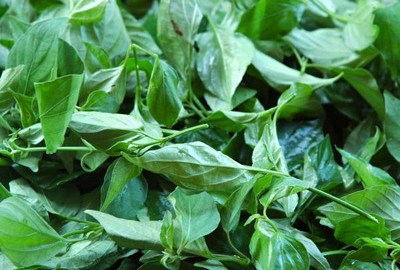Ozone Overload: Kudzu Vine To Blame

Here’s the tricky thing about ozone: we want lots of it up high in the upper atmosphere, where it blocks radiation and protects us, but we want as little of it as possible down here on the surface of the earth, and in our eyes, ears, noses and throats, where it acts as a harmful pollutant. And plants – those innocent green things – can actually be top culprits when it comes to producing surface ozone. A study just published in Proceedings of the National Academy of Sciences journal says that surface ozone levels are shooting through the roof, thanks in large part to a creepily invasive vine called Kudzu.
Originally from Japan, Kudzu grows like a weed, and has taken over southern US states to such an extent that it’s been nicknamed “the vine that ate the south.” These days, Kudzu is getting even more ambitious and heading north to Pennsylvania and New York. In fact, there’s so much of the stuff that scientists at UVA say Kudzu is to blame for a 50% increase in the number of days each year cited by the EPA as having “unhealthy” levels of ozone.
All that extra ozone means increased levels of asthma and lung cancer, accompanied by weaker crop yields.
“Essentially what we found is that this biological invasion has the capacity to degrade air quality, and in all likelihood over time lead to increases in air pollution, increases in health problems caused by that air pollution, and decreases in agricultural productivity,” said Lerdau, professor of environmental sciences and biology at UVA.
On the bright side, people preparing to combat the Kudzu vine on their home turf don’t have to polish up the lawn mower (gas guzzler) or whip out the herbicides (ick). They have a third, better option: invest in some animals to graze the weed away. Symbiosis, what a beautiful thing.





